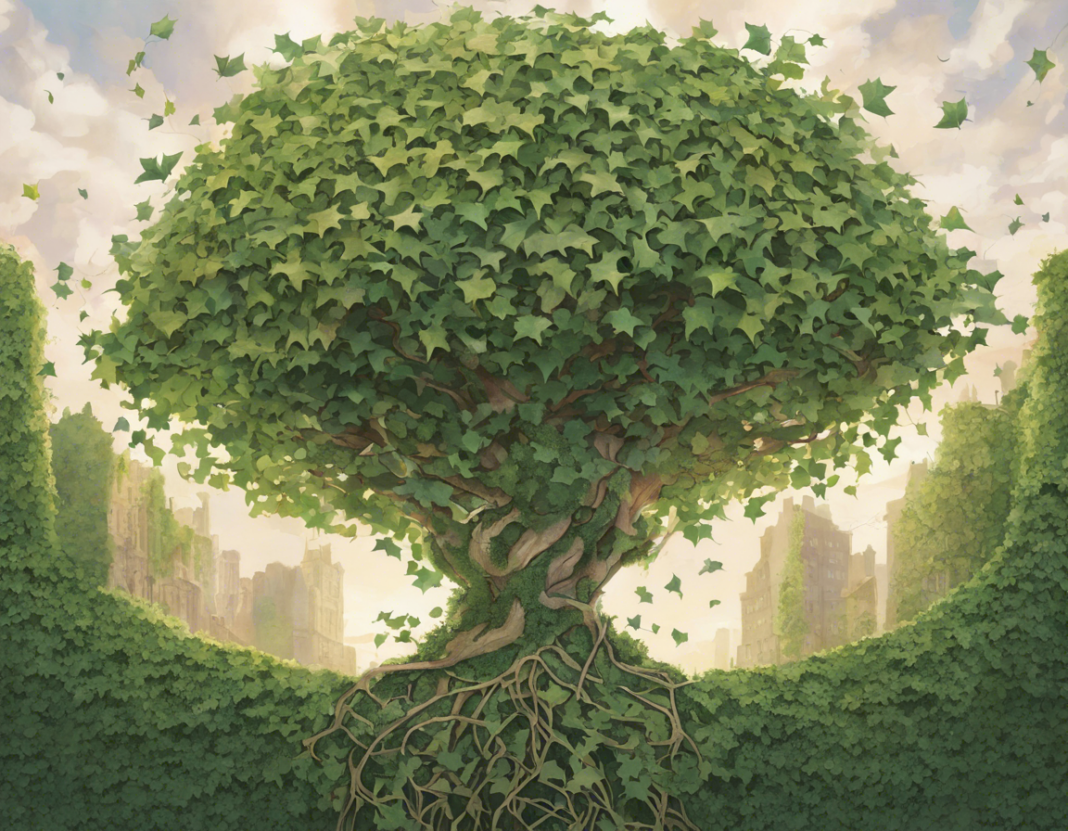Introduction
In the world of botanical wonders, few plants are as captivating as ivy. Its lush greenery, delicate tendrils, and graceful growth patterns make it a beloved addition to gardens, homes, and landscapes around the globe. Ivy has a rich and varied history, its symbolism ranging from fidelity and friendship to protection and luck. But beyond its aesthetic appeal and symbolic significance, ivy also plays a crucial role in our ecosystem, forming a beautiful connection with the Earth that goes far beyond its surface beauty.
The Origins and Varieties of Ivy
History and Symbolism
One of the most enduring symbols associated with ivy is its representation of fidelity and friendship. In ancient Greece, ivy was dedicated to Dionysus, the god of wine and revelry, symbolizing faithfulness and eternal friendship. The plant’s evergreen nature also led to its association with immortality and eternal life in Roman mythology. Ivy’s ability to cling and climb made it a symbol of protection in medieval Europe, where it was often planted near homes to ward off evil spirits. Today, ivy continues to be a popular symbol of loyalty, friendship, and protection in various cultures around the world.
The Environmental Benefits of Ivy
Beyond its symbolic and aesthetic appeal, ivy plays a crucial role in supporting biodiversity and ecological balance. Ivy is a resilient and adaptable plant that provides shelter and nesting sites for a wide range of insects, birds, and mammals. Its dense growth habit creates a microhabitat that offers protection from predators and harsh weather conditions. Ivy also provides an important food source for pollinators, such as bees and butterflies, by producing nectar and pollen-rich flowers in the fall.
Ivy as a Natural Insulator
In addition to its role in supporting biodiversity, ivy offers practical benefits for buildings and structures. Ivy’s dense foliage acts as a natural insulator, helping to regulate temperature and humidity levels. In the summer, ivy provides shade and reduces cooling costs, while in the winter, it forms a protective barrier against wind and cold, reducing heating expenses. Ivy also helps to absorb carbon dioxide and pollutants from the air, improving air quality and reducing greenhouse gas emissions.
Caring for Ivy
Ivy is a relatively low-maintenance plant that thrives in a variety of conditions. It prefers well-drained soil and partial to full sunlight but can also tolerate shade. Regular watering is essential during the plant’s establishment period, but once established, ivy is drought-tolerant and can withstand dry conditions. Pruning is recommended to control growth and shape the plant, as ivy can become invasive if left unchecked.
Common Varieties of Ivy
There are numerous varieties of ivy available, each with its own unique characteristics and growth habits. Some popular types of ivy include English ivy (Hedera helix), Algerian ivy (Hedera canariensis), and Persian ivy (Hedera colchica). English ivy is one of the most common varieties, known for its climbing vines and dark green leaves with creamy white veins. Algerian ivy features larger, glossy green leaves with prominent veining, while Persian ivy boasts large, heart-shaped leaves and a vigorous growth habit.
FAQs About Ivy
1. Is ivy harmful to buildings and structures?
While ivy can cling to and climb buildings, it is generally not harmful to structures that are in good condition. However, ivy should be kept away from wooden surfaces and areas with existing damage, as it can exacerbate decay and moisture retention.
2. Can ivy be grown indoors?
Yes, ivy can be grown indoors in containers or hanging baskets. It thrives in bright, indirect light and humid conditions. Regular watering and occasional misting will help keep indoor ivy plants healthy and vibrant.
3. Is ivy toxic to pets?
Certain varieties of ivy, such as English ivy, can be toxic to pets if ingested. It is important to keep ivy plants out of reach of pets and monitor them closely if they are exposed to the plant.
4. How fast does ivy grow?
The growth rate of ivy can vary depending on the variety and growing conditions. In ideal conditions, ivy can grow several feet per year, quickly covering fences, walls, and other structures.
5. Can ivy be propagated from cuttings?
Yes, ivy can be easily propagated from stem cuttings. Simply snip a healthy stem with several leaves, remove the lower leaves, and place the cutting in water or soil until roots develop.
Conclusion
In conclusion, ivy’s beauty goes far beyond its graceful vines and lush foliage. Its deep-rooted history, cultural symbolism, environmental benefits, and practical uses make it a truly remarkable plant. By exploring the beautiful connection between Earth and ivy, we gain a greater appreciation for the intricate relationship between plants and the world around us. Whether adorning a trellis, providing shelter for wildlife, or insulating a building, ivy continues to enchant and inspire us with its timeless elegance and enduring charm.


